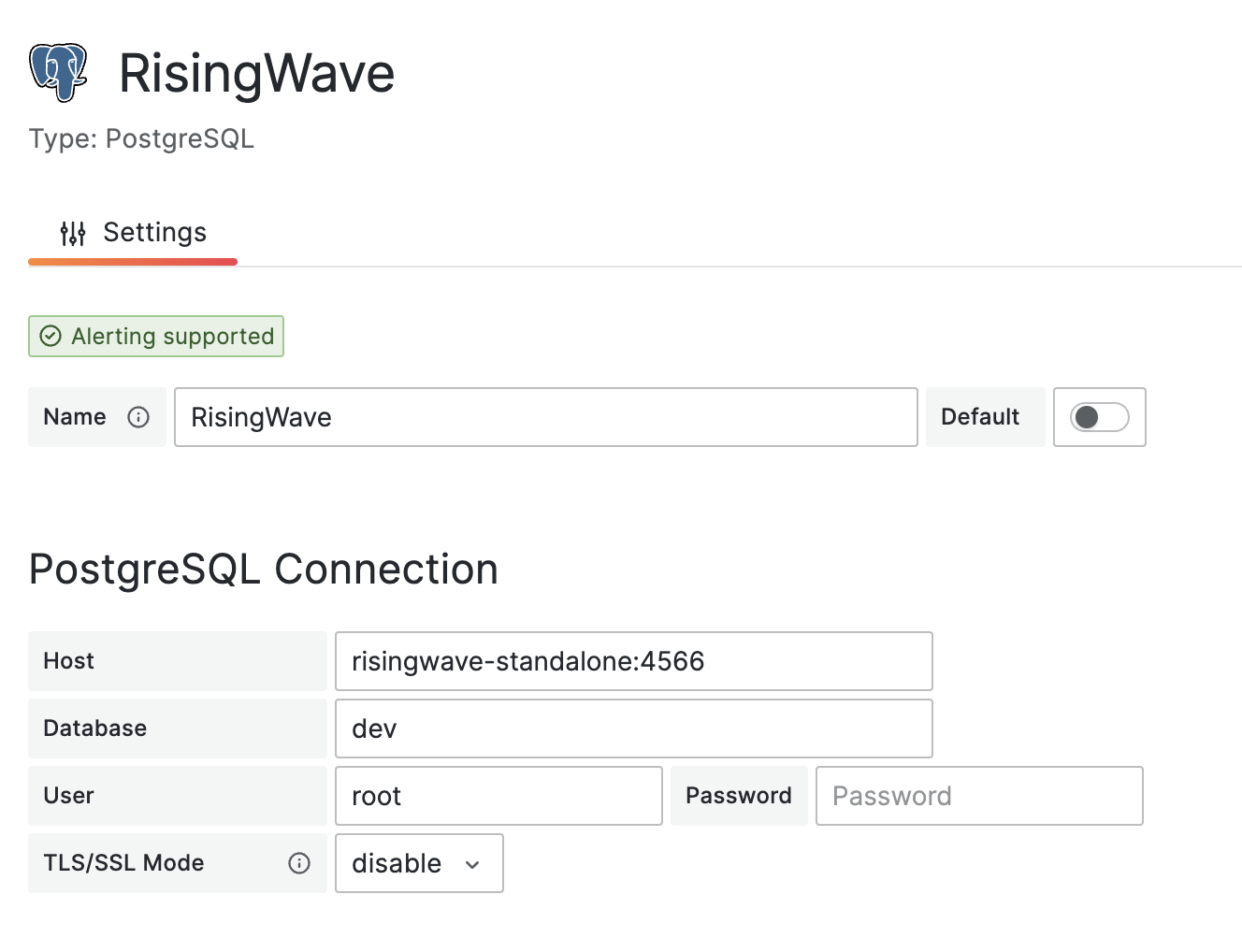Overview
RisingWave uses Prometheus to collect the system metrics. Prometheus is a powerful monitoring platform that provides an end-to-end solution from instrumenting applications to querying metrics. However, Prometheus’s local storage is limited to single-node durability and scalability. To replicate data from local storage to remote storage systems, we can use a proxy service that sends data in JSON format to Kafka. Then RisingWave can read, store, and perform complex queries on the data from Kafka. There are numerous RisingWave system metrics that Prometheus collects. The most convenient method of tracking these metrics would be using a live dashboard. Luckily, since RisingWave is Postgres-compatible, we can use Grafana to visualize the metrics changing over time by creating dashboards. In this tutorial, you will learn how to use RisingWave as a metrics store to monitor its runtime metrics and visualize them using Grafana.Prerequisites
- Ensure you have Docker and Docker Compose installed in your environment. Note that Docker Compose is included in Docker Desktop for Windows and macOS. If you use Docker Desktop, ensure it is running before launching the demo cluster.
- Ensure that the PostgreSQL interactive terminal,
psql, is installed in your environment. For detailed instructions, see Download PostgreSQL.
Step 1: Launch the demo cluster
In the demo cluster, we packaged RisingWave, Prometheus, and Grafana. Prometheus has been set up to collect metrics from RisingWave. First, clone the risingwave repository to the environment.integration_tests/prometheus directory and start the demo cluster from the docker compose file.
Step 2: Connect RisingWave to data streams
Between Prometheus and Kafka, we use Prometheus-kafka-adapter, a proxy service that converts metrics into JSON and then sends them to a Kafka topic. Here is a sample JSON:Step 3: Create a materialized view
Now, create a materialized view that tracks the average metric values every 30 seconds. We will split the stream into 30 seconds windows and calculate the average metric value over each window. Here we use the tumble window functionality to support window slicing.Step 4: Add RisingWave as a data source in Grafana
Trying to track how a specific metric changes over time without a dashboard is difficult so we will use Grafana to visualize the metrics to make this easier. Grafana is packaged in the demo cluster and running. To visit Grafana, enter127.0.0.1:3001 in your web browser. Since RisingWave is Postgres-compatible, RisingWave directly connects to Grafana with the built-in Postgres connector.
To add RisingWave as a Postgres data source:
- Go to Configuration > Data Sources.
- Click Add data source and select PostgreSQL.
- Specify the database connection parameters.
- Click Save & test.

Step 5: Visualize RisingWave metrics through Grafana
Finally, we can visualize the metrics the materialized view tracks by creating a data panel. To create a panel:- In Grafana, go to Dashboards > New dashboard.
- Click on Add a new panel.
- Specify the time range, data source, and query to visualize RisingWave metrics.

Summary:
In this demo, we learned:- How to set up the data flow of RisingWave → Prometheus → Kafka → RisingWave.
- How to visualize RisingWave’s computed results via Grafana.